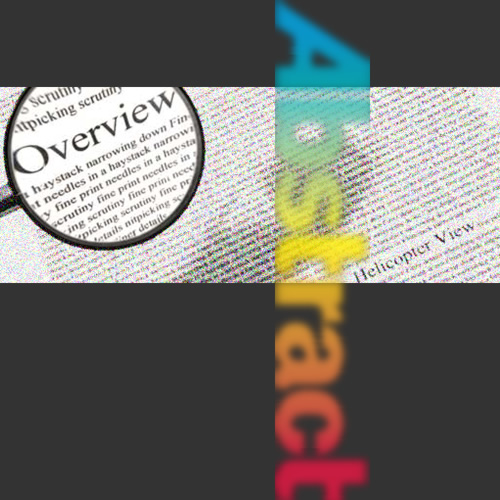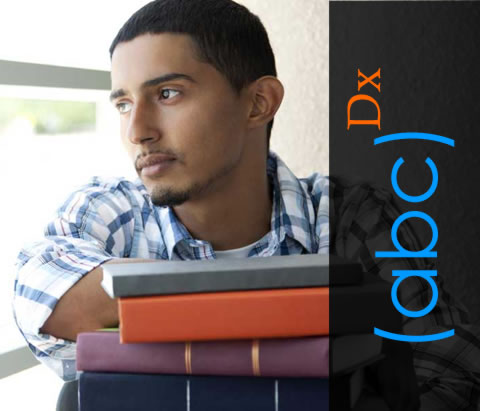
discourse study-blog | resources | lit review maps | profiles
enquiry dysdefs QNR | dysdims QNR | research QNR
thesis overview | literature | research design | analysis & discussion | closing reflections
 Draft (2017-18)
Draft (2017-18)
Introduction to the Project Overview
This opening section of the thesis establishes the scope of the project, the rationales that have driven it, the stance and perspective that has underpinned my thinking and the direction that the project has taken, together with acknowledgement of the guidance, advice and learning development opportunities that have been afforded to me by Middlesex University, London.
An Abstract of the project opens the introduction, followed by brief acknowledgements.
In the Project Overview which follows I introduce the current situation in dyslexia research and identify briefly how this is problematic for the researcher because there remains a lack of consensus about the definition of dyslexia. I suggest that this makes researching dyslexia in higher education contexts especially challenging because many of the early-learning difficulties, particularly in relation to the uptake of reading skills conventionally associated with a dyslexia, will have been displaced to an extent by other academic skills and learning management issues that can have a more significantly detrimental impact on academic achievement. I argue that rather than persist with differentiating students with dyslexia from their peers through learning support interventions and reasonable adjustments to their places of study intended to ameliorate the disadvantages attributable to their dyslexia, the debate needs to refocus on curriculum and learning delivery in university situations in ways that more readily engender the principles of Universal Design for Learning (UDL) (Rose & Meyer, 2000). UDL is built on the philosophy that learning systems should be designed flexibly so that they can be accessed and used equally effectively by people with the widest possible range of capabilities and learning needs, hence dyslexia would have reduced relevance because the UDL environment would accommodate such learning differences without a need for any additional adjustments. I continue by briefly introducing the metric used in my project that is designed to evaluate the construct of academic confidence where I describe how this has been used to gauge differences in the student research groups and subgroups that were identified and I outline how this has been used to suggest that the identification of student-dyslexia at university may be more counterproductive than useful.
This leads to the research questions which are established with an introductions to the quantitative data processes which have been employed to address them. The terminology used throughout the project is introduced, explained and defined where possible, although the persistence of difficulties in defining dyslexia is a central thread which runs through this thesis.
This opening section continues by explaining the ethical processes and standards that have been adhered to which is followed by a significant section that establishes my position as a researcher, concluding with a short sub-section suggesting why I believe this research and the outcomes are important and how these might make a positive contribution to the wider debate on how dyslexia - whatever it is - can be accommodated at university-level study.
 Abstract
Abstract
This project explores how university students' academic confidence may be affected by them being identified as dyslexic.
The premises being tested are firstly that students with an identified dyslexic learning difference present a lower academic confidence than their non-dyslexic peers; and secondly that students with a dyslexia-like learning and study profile, which will be designated as quasi-dyslexia as it may be indicating an unidentified dyslexia, present a higher academic confidence than their dyslexia-identified peers. Hence this might be suggesting that knowing about one's dyslexia may be an impacting factor on academic confidence at university.
Robust, evidence-based arguments support the view that academic confidence is a sub-construct of academic self-efficacy, which has been identified as a significant contributor to academic achievement. This thesis will conclude that identifying dyslexia in university students may be counterproductive to the attainment of these students' academic outcomes because due to depressed academic. Exploring how academic confidence is affected by learning differences widely attributed to dyslexia is thought to be a fresh approach to exploring the ways that dyslexic students tackle the challenges of academic learning management at university. The metric used to gauge academic confidence has been the Academic Behavioural Confidence Scale, developed by Sander & Sanders (2006) which is gaining traction as a useful tool for exploring the impact of actions and behaviours on study at university and how these may impact on academic output.
Because existing dyslexia identifiers generally adopt a deficit-based approach, a fresh, Dyslexia Index (Dx) Profiler has been created which attempts to take a more neutral position as an evaluator of dimensions of study-preferences and study behaviours that may provide indications of dyslexia-like learning characteristics. The Dx Profiler has been designed to provide an indication of a student's level of dyslexia-ness, a term which is introduced in this study in preference to referring to severity of dyslexia.
The research outcomes conclude that the identification of learners as different by virtue of their dyslexia may substantially impact on their academic confidence. Analysis of the data has produced a moderate effect size of g = 0.48 between the Academic Behavioural Confidence (ABC) of students with identified dyslexia and that of students with apparently unidentified dyslexia-like profiles. The ABC of the dyslexic subgroup was lower. This result was supported by a statistically significant difference between the mean ABC values of the two groups (t = 1.743, p = 0.043). Deeper analysis has revealed more complex inter-relationships between the factors of dyslexia and factors of academic confidence.
One limitation of the research has been the untested validity and external reliability of the Dyslexia Index Profiler. However the tool has served its design purpose for this study and this is indicated by good internal consistency reliability. It is believed that the Dx Profiler could be developed into a robust, standardized tool which would provide as a fresh approach for identifying dyslexia-like study profiles across university communities without necessarily identifying dyslexia per se. This could be particularly useful as an aid for designing targeted learning development interventions and support more widely across university learning communities.
 Acknowledgements
Acknowledgements
I acknowledge with thanks, the study support and academic guidance provided by the research community at Middlesex University, the Research Degrees Administration Team at the Department of Education and in particular, the advice and interest of the supervisory team of Dr Victoria de Rijke and Dr Nicola Brunswick.
I also expresses gratitude to Middlesex University for the 3-year Research Studentship funding, without which, this research project would not have been possible.
Project Overview
 Academic Confidence and Dyslexia at University
Academic Confidence and Dyslexia at University
This project is exploring how the academic confidence of students at university is affected by dyslexia-ness. It is about finding out how students with dyslexia or with dyslexia-like profiles gauge the impact of their dyslexia-ness on their study processes in relation to their sense of academic purpose, in particular the confidence expressed in meeting the academic challenges they face at university. The academic confidence of students with little or no indications of dyslexia will be used for comparison. The term 'dyslexia-ness' has been introduced in this study as an alternative viewpoint to the severity of dyslexia because in the context of this project, dyslexia is being considered as a learning difference in line with the more positive attitudes towards dyslexia emerging in recent years, partly by approaching dyslexia as a multifactorial condition (Tamboer et al, 2014, Tamboer et al, 2017) but also by locating dyslexia on the spectrum of neurodiversity (Cooper, 2009). This is a concept which is said to have emerged out of civil rights lobbying by the autism community in the closing decade of the last century (Griffin & Pollack, 2009) and as well as dyslexia and autism, the spectrum of neurodiversity can include for example Asperger's Syndrome and ADHD (Baker, 2011). The neurodiversity approach considers that individuals with such conditions are presenting atypical brain-wiring, that is neurological differences in comparison to the population more generally, but these are should not be considered as disorders because their profiles present a range of strengths as well as weaknesses (Armstrong, 2015). By taking the multifactorial, neurodiversity approach to dyslexia, a fresh, innovative profiler has been developed for this project which attempts to offer an alternative understanding of learning difference which does not focus on deficit-discrepancy models or disability and instead aims to use the dimensions of dyslexia that tend to be typical amongst students with dyslexia at university to provide a mechanism to gauge dyslexia-ness. The purpose is to try to determine whether an association exists between levels of dyslexia-ness and levels of academic confidence amongst the participant-respondents in the study. Through this process, the study will evidence that students who know about their dyslexia present lower levels of academic confidence in comparison to their non-dyslexic peers. This is thought to be an innovative approach to exploring more about how dyslexia appears to impact on studying at university and suggests that the medical, deficit model of dyslexia implied by diagnosing it as a disability in Higher Education learning contexts as a means to enable access to differentiated learning support (and the funding that provides for it) may be more counterproductive than helpful. The research is also expected to contribute to the discourse on the non- or late-reporting of dyslexia in university students (eg: Henderson, 2015) by using the evidence collected to question the value of such late-learning identification of dyslexia. The study will also add to the limited range of research relating to the academic confidence of university students who are from minority groups, especially those deemed to have a learning disability in whatever ways this might be defined.
The study also aims to add weight to the argument which favours a shift in the delivery of university learning towards being more inclusive and accessible, and particularly more adaptable and flexible because encouraging the design and development of more accessible curricula seems preferable to retrofitting the curriculum to the learner (Lancaster, 2008) by way of 'reasonable adjustments'. This might then mean that learners with dyslexia would feel more included and less 'different' (eg: Dykes, 2008, Thompson et al, 2015). It may also suggest that identifying students' study profiles as falling within the dyslexia envelope on the spectrum of neurodiversity, or as a multifactorial learning difference is unnecessary and could be counterproductive in relation to positively advancing their academic achievement. The thesis will support the premise that dyslexia may now be best considered as an alternative form of information processing (Tamboer et al, 2014) in teaching and learning environments that are sufficiently adaptable and flexible to accommodate dyslexia without differentiation. This would be more likely were institutions to develop their learning spaces, curricula, pedagogical processes and assessment procedures to be more accommodating of learning diversity without the need for the 'reasonable adjustments' defended in legislation such as the Equality Act 2010 in the UK, designed to advance and protect the rights of disabled individuals across society. This might be achieved by adopting the principles of Universal Design for Learning (UDL), an original approach to redesigning classrooms and curriculum delivery that emerged from a reauthorization of the Individuals with Disabilities Education Act 1997 in North America as a result of renewed interest in extending the rights of students with disabilities to better access to the general education curriculum in addition to earlier rights gained to equal physical access to buildings and teaching spaces. UDL, originally attributable to extensive work and research conducted by the Centre for Applied Special Technology (CAST) in the USA and particularly to Rose & Meyer (e.g.: 2002), is a blueprint for institutions to become properly accessible and inclusive without the need for differentiation of learning spaces or curriculum delivery previously thought as the most appropriate way to accommodate the atypical learning needs of disabled students. UDL aims to embrace the principles of inclusivity and remedy the emerging disconnect between communities of learners that are becoming increasingly more diverse with the 'one-size-fits-all' curriculum. Such diversity has been witnessed here in the UK by the success of widening participation initiatives designed to encourage learners from under-represented groups to attend university. These are students typically from lower socio-economic communities, non-white ethnicities, learners with disabilities or mature and part-time students who were previously only rarely seen in higher education (Moore et al, 2013). It will be argued that when learning disabilities or differences cease to impact on access to, and engagement with learning it is reasonable to suppose that the persistent disability model of dyslexia, tacitly implied by 'diagnosis', 'reasonable adjustment' and 'support', will have reduced meaning. Instead, the positive strengths and qualities that form part of a spectrum of apparent differences can be celebrated and integrated into the development of the learner in ways that will encourage a greater sense of academic agency to emerge through stronger academic confidence, and that this may contribute positively towards better and more successful academic outcomes at university (Nicholson et al, 2013).
To gain a greater understanding of the issues is at least a first step towards meeting the learning needs of learning differences (Mortimore & Crozier, 2006). Hence the aim of this research project is to explore the relationship between specific aspects of academic confidence at university and the learning difference of dyslexia. Zimmerman (1995) spoke of academic confidence in the context of academic agency which he described as 'a sense of [academic] purpose, this being a product of self-efficacy and academic confidence that is then the major influence on academic accomplishment' (ibid, p202). It is through the concept of academic self-efficacy, the parent construct of academic confidence (Sander & Sanders, 2006) that this research project has been tackled. Exploring how academic confidence may be affected by the learning difference of dyslexia is important because in addition to adding weight to the UDL agenda, relationships revealed may also contribute to the emerging discussion on the design of learning development and 'support' for groups of learners who feel marginalized or disenfranchised because conventional learning curriculum delivery tends to be out of alignment with their learning strengths, or due to their perceived stigma about being labelled as 'disabled' in learning contexts (Dykes, 2008, Shaw & Anderson, 2018). This project is particularly topical at this time in the light of proposals for dyslexia to be disassociated from the (UK) Disabled Students' Allowance in the near future. Although this might be considered as a positive move in detaching dyslexia from the disability agenda unless the adoption of UDL principles in higher education institutions becomes more commonplace, students with dyslexia may find it more challenging to gain access to the learning guidance that accommodates their learning differences in the current framework of learning and study at university because the support that had been previously available through the DSA would be withdrawn. Hence the research may contribute to an expected raised level of discourse about creating more inclusive curricula that supports a social justice agenda by arguing for a wider provision of undifferentiated learning development services that are available for everyone studying at university. This will be one that is fully accessible and actively promoted to the complete, coherently integrated student community in HE and which moves away from the negatively-connotated perception of learning support as a remedial service both amongst academics and students at university (Laurs, 2010).
 Ethics and Permissions
Ethics and Permissions
This research study has been conducted in accordance with all the specified and regulatory protocols set out in the University Regulations of Middlesex University, London.
Following an application to the Ethics Subcommittee of the School of Health and Education, approval to pursue the research and report the results in the form of a thesis to be submitted to the university for consideration for the award of Doctor of Philosophy was obtained on 21st July 2015.
Informed consent was obtained from all research participants, whose confidentiaility and anonymity was protected, who were not harmed by and who participated voluntarily in this study, and were given the opportunity to withdraw the data they had provided from the research at any time.
All Ethics approval documents are available in Appendix #
This research study is independent and impartial, has not been influenced by any external source or agency and has been conducted in accordance with guidance provided in the ESRC Framework for Research Ethics (2015).
The researcher confirms that the research has been conducted with integrity and to ensure quality to the best of his ability and is entirely his own work.
[183 /63,074 (at 08 Jan 2018)]
 Stance
Stance
In the domain of university education, my view is that there is a burgeoning need to influence a change in the system of delivery - and most definitely assessment - of learning in Higher Education. This is broadly based on over a decade's experience of trying hard to be a good academic guide where I have interacted with students across the complete university community, from students with dyslexia or disabilities to others who are returning to study later in life, to those from overseas or from minority ethnicities in the UK. As universities open their doors to a much broader spectrum of students through widening participation and alternative access schemes, I believe that many of these new faces, together with the more traditionally-seen ones, would benefit academically were there a better institutional-level understanding of the impact that individual differences have on educational engagement, ownership of learning (Conley & French, 2014) and hence, likely attainment.
The learning environments and processes that are generally prevalent at university tend not to be informed by psychological knowledge about learning but appear to be increasingly driven by the ‘student experience’ of university with the annual National Student Survey having a strong influence on what this is. This is because students are increasingly considered as consumers and their university education is the product (Woodall et al, 2014). In the earlier period following its introduction in 2005, high ratings in the NSS had significant implications for funding, although the direct impact of the NSS on university budgets is now (2017) less significant because universities' income streams are largely from student fees. But his has led to different challenges because through the cap on student numbers being increased in 2014-14 by the UK Coalition Government at the time and eliminated entirely in 2015-16 many universities are now fighting for the same students to fill their places (Financial Times, 2018). So whilst the direct financial influence of the NSS is reduced, this has been displaced by shift in emphasis towards how the outcomes of the survey bolster the reputations of universities, especially as viewed by the parents of the largest group of university 'customers', that is 18-24-year-olds. Through my experience in higher education during this last decade or so I have witnessed educational models based on communities of knowledge being displaced by ones that are more focused on the more attractive, social experiences of being at university. This may be more apparent in institutions that are less driven by research funding because these universities have to rely more unidimensionally on income sources generated from student fees to meet their costs: hence, more students equals greater income. Having worked in both WP (Widening Participation) and Russell Group universities, and networked with academic and learning development colleagues across the sector, this is my observation and although I concede that the underlying intention of the NSS is to positively influence teaching and learning quality and to make universities more accountable, the extent to which responding to 'the student voice' achieves this is the subject of continued research (eg: Brown et al, 2014) not least due to wide variations in how raw score data is interpreted (Lenton, 2015).
However, the 'knowledge model' is not without its failings either: arguably entrapped by a rigid pedagogy that in many cases remains rooted to a well-established didactic approach for transmitting knowledge, this kind of university learning can appear to be underpinned by the idea that it is sufficient to inculcate knowledge through a kind of passive, osmotic cognitive process. Notions of ‘student-centeredness’ and inclusivity are less important in this ancient, traditional and frankly elitist approach to imbibing knowledge than is a desire to maintain kudos and reputation. A case in point is the situation that my nephew found himself in throughout the first year of his study at a highly respected London university. It is accepted that making a transition from directed study at A-level to self-managed learning at university can be challenging but even as a top-grade A-level student who was nevertheless expecting his course to be difficult, so far, his 'university experience' has been an unhappy one. He feels that his earlier academic confidence has been substantially eroded because he has yet to find a route to the learning development and support from his academic tutors that he was expecting to be available and which he feels he needs if he is to make progress on his course. He has found the learning environment to be stale, unwelcoming, uncommunicative and isolationistic and has now abandoned his course altogether. Although his may be an isolated case reported anecdotally, it may also be an indication of a wider malaise and reticence to engage more equitably with the contemporary university student who is choosing to invest in higher education, at some of our top institutions at least. This seems inappropriate and unnecessarily challenging and if universities are to be part of an academically rigorous, tertiary education system that anyone with the right academic credentials can attend but which includes aspirations towards genuinely fostering social mobility, engendering social justice and meeting the learning development needs of its 'customers', then together with the maintenance of strong academic standards, a renewed effort should be devoted to finding ways to create a middle ground between possibly contemptible student recruitment incentivization and an outdated, traditional, self-preserving learning orthodoxy. This will be an environment that adheres to the principles of Universal Design for Learning and which truly focuses on student-learning-centredness by providing an adaptable, flexible and genuinely inclusive curriculum that everyone is able to engage with using the academic and functional capabilities that they bring to their institutions so that they are actively encouraged to aspire to their academic potential through the quality of their learning experience at university.
But my nephew is not disabled, does not present any suggestion of dyslexic learning differences and so is likely to be typical student amongst conventional student who form the majority attending university. However he may be less typical but nevetheless part of a sizeable minority of students for whom the university experience is a disappointing and overly challenging one. What of the situation for disabled and dyslexic students then? When challenged, or driven by a compliance requirement of the most recent legislation, The Academy, by which I mean the higher education sector generally, might be observed as tackling issues of learning inclusivity through the requirements of 'reasonable adjustment' directives originally established in disability equality legislation now decades old but currently enshrined in an updated version by the Equality Act 2010. Since the establishment of the Act, it is acknowledged that institutions have made progress on compliance. Typically this has been in relation to physical access to buildings, where ramps may replace steps and doors may be self-opening, or in technology provision, where ensuring that at least some computers are equiped with screen-readers to accommodate visual impairments or adjustable height tables are provided for computer workstations to enable easier access for wheelchair-users. However for students with dyslexia, defining what constitutes a 'reasonable adjustment' can be problematic because dyslexia is such a diverse learning difference and hence anticipating what must be done to ensure compliance can be challenging for instutitions. For example: this was noted by Morrow (2017) in relation to adjustments to academic asessment which were shown to have had limited overall effectiveness in the university where the study was conducted. This issue of complying to the reasonable adjustment agenda of equality legislation could be fixed by adopting a ground-up reframing of academic curricula in ways that by design, embrace learning diversity. Granted, this may challenge the scope of strategic planning for the future of tertiary-level, high-quality learning, not least because it is may be considered radical, difficult to implement and expensive so that attempts to create socially inclusive learning environments and opportunities may be inhibited by such organizational factors (Simons et al, 2007). Despite this some pockets of excellence really make a difference to some, if not all learners, demonstrated by enlightened learning providers who appear more geared towards the adoption of elements of 'Universal Design in Learning (UDL)' in the construction of university courses in which embracing learning diversities is at the core of curriculum processes (Passmann & Green, 2009). These are learning environments which place at the heart of their curricula the principle of giving all individuals equal opportunity to learn with proper consideration being given to the range of academic and functional capabilities that are presented, the creation of learning goals, methods, materials and assessments that work for everyone and dispense with a 'one-size-fits-all' learning-and-teaching agenda in favour of flexible approaches that can be adapted and adjusted for individual needs (Jorgenson et al, 2013). Examples of initiatives that show movement towards UDL may be simple-to-achieve adaptions such as ensuring that PowerPoint presentation are available online in VLEs (Virtual Learning Environments) in advance of teaching sessions and by including audio commentaries on slides, or providing supplementary video material that covers the same topic, or permitting flexible assessment processes that are willing to consider vehicles other than the conventional essay for communicating knowledge. These might be academic blogs or concept maps or video presentations that enable students to demostrate their academic capability. More recent and genuine progress may still be stymied by an increased focus on accountability and quality of teaching at universities that has particularly created difficulties in research-intensive institutions where well-meaning campaigns for a reconfigured and more inclusive perception of 'scholarship' has been creating a tension between teaching activities and research ones by lowering the status of teaching (MacFarlane, 2011). This is despite prior research activities which have been concerned with identifying 'good teaching', quantifying what this means and presenting evidence that this is at the heart of high quality student learning (Trigwell, 2010). Very recent initiatives to define and support the Scholarship of Teaching and Learning in universities, the philosophy of which relates to elements of reflective practice, conducting and disseminating practice-based research and proactively engaging with students for example, has been underpinned by the Higher Education Academy, not least through the UK Professional Standards Framework (Fanghanel et al, 2016) but it remains to be seen how these initiatives can be integrated with the principles of UDL, advocacy for which is only slowly gaining traction in the UK, but where long-term cost benefits and reductions in requirements for individual-learner-focused adjustments can be the reward for long-sighted investment in teaching and learning systems (Draffan et al, 2017).
Thus the positive contributions to properly engaging with learning diversity in our universities seems patchy at best. Sector-wide challenges ranging from widening participation to developing business-focused strategies that can respond to the government-imposed marketization of higher education (and the funding challenges that this is bringing), are not helping in finding ways to tackle the institutional entrenchment of traditional teaching and learning processes with a view to making the learning experience better for everyone. At the same time, striking a good balance between new, flexible, adaptable and inclusive teaching and learning activities and the essential job of universities to foster climates of research innovation and academic excellence is becoming ever more challenging not least because funding is uncertain and other initiatives aimed at providing alternatives to full-time university study are on the increase, for example, multi-stakeholder degree apprenticeship schemes (Mulkeen et al, 2017). Witness the diversity of current routes into teaching, most of which are eroding the essential value of academically-based initial training by attempting to develop rapid responses to a recruitment crisis. Never are all these uncertainties more sorely felt than amongst communities of learners who come to university with spectra of learning profiles and preferences that are outside the box and as a result, may often feel disenfranchised and not properly accommodated. For these individuals and groups whose learning needs fall outside the conventional envelope, broadly met by the existing ‘one-size-fits-all’ provision of higher education, the current processes of compensatory adjustments tend to apply strategies targeted at ‘fixing’ these unconventional learners – well-meaning as these may be – rather than focusing on the shortcomings of an outdated ‘system’ which originally evolved to serve the academic elite. These students are often labelled with difficult-to-define ‘learning disabilities’ and whatever these so-called ‘disabilities’ are, they are dynamic in nature, not necessarily an objective fact and that it is learning institutions that translate broad profiles of learning strengths and weaknesses into difficulties and disabilities through the strongly literacy-based medium of transmission of knowledge (Channock, 2007) and the lack of adaptability of this to learning differences.

The aim of this project is that by exploring the relationship between academic confidence and the learning disability/difference of dyslexia the research objective is to establish that attributing the label of dyslexia to a particular set of learning and study profiles can inhibit academic confidence and may contribute to a reduced likelihood of gaining strong academic outcomes because academic confidence, through being a sub-construct of academic self-efficacy, is widely reported as a potential marker for academic performance (Honicke & Broadbent, 2016). In short, when it comes to guiding learners towards getting a good degree at university, this project is testing the idea about whether is it better to label an apparently dyslexic person as ‘dyslexic’ or not. If not, then it follows that dyslexic students may be better left in blissful ignorance of their so-called ‘learning difference’ because this may lead to better prospects of gaining a higher academic outcome to their studies that is comparable to their non-dyslexic peers. They should be encouraged to battle on as best they can within the literacy-based system of curriculum delivery that they are studying in, despite it not being suited to their learning profiles, strengths and preferences. Hence there would be no recourse to ‘reasonable adjustments’ that identify them as ‘different’ because the identification itself might be more damaging to their academic prospects than the challenges they face that are considered attributable to their dyslexia.
 Research Importance
Research Importance
This study is important because it makes a major contribution towards filling a gap in research about how the academic confidence of dyslexic students at university may be affected by their dyslexia when compared to their quasi-dyslexic and non-dyslexic peers. There appears to be no peer-reviewed studies that specifically explore the interrelationships between academic confidence and dyslexia in higher education contexts. Asquith's (2008) study was exploring how dyslexia was related to self-esteem and to academic confidence, hypothesizing that dyslexic students who were receiving support would present higher levels in each of these constructs in comparison to dyslexic students who were not. Asquith tested the data collected to identify significant differences between mean values of the variables academic confidence, evaluated using the Academic Behavioural Confidence Scale (Sander & Sanders, 2003) and dyslexia, using Vinegrad's Adult Dyslexia Checklist (Vinegrad, 1994). A significant feature of Asquith's study was an assumption that a proportion of the apparently non-dyslexic students recruited into the study may present characteristics of dyslexia, according to the Vinegrad Checklist. Hence three research subgroups were established: dyslexic students, non-dyslexic students and quasi-dyslexic students. This resonates with the research processes of this current study where the same, three subgroups have been established. Asquith found that significant differences in academic confidence between dyslexic and non-dyslexic students were presented but did not appear to consider investigating for differences between dyslexic and quasi-dyslexic or between non-dyslexic and quasi-dyslexic students in her samples. This current study is highly interested in these latter comparisons in particular and has designed and developed in innovative Dyslexia Index Profiler to attempt to discriminate quasi-dyslexic from non-dyslexic students. One clear limitation of Asquith's study was the adoption of the Vinegrad Checklist because firstly, it is intended as a prequel to any more formal dyslexia screening assessment and hence has is limited in its ability to discriminate between dyslexic and non-dyslexic respondents; and secondly, the Checklist employs binary response indicators - that is, respondents answer either 'yes' or 'no' to each scale item on the checklist and therefore offers no opportunity for any graded responses which may enable more subtle respondent variations to emerge. Barrett (2005) in a similar unpublished study was reported to have also found depressed levels of academic confidence in dyslexic students in comparison to their non-dyslexic peers (Sander , 2009) although it has not been possible to review the research as it is unavailable.
This study is also important because it will add to the discourse on the 'dilemma of difference', first suggested by Minow (1985, 1990) as significant in determining how schools can deal the educational needs of children defined as 'different' without stigmatizing them on that basis, by viewing 'difference' through the lens of contemporary higher education provision for students with dyslexia.
 Terminology & Register
Terminology & Register
Academic Confidence
Academic confidence is the construct that will be evaluated and set as the dependent variable in this study. The position will be adopted that academic confidence is a sub-construct of academic self-efficacy (Sander & Sanders, 2003) which is rooted in the Social Cognitive Theory (SCT) of Bandura (1977, 1986, 1997a). It has been argued that academic confidence is likely to emerge primarily as a result of mastery experiences (Skaalvik & Skaalvik, 2002), this being one of the four components of SCT, the others being vicarious experiences, verbal persuasion and physiological states. Social Cognitive Theory positions self-efficacy as one of the components of human self-regulation and explores how this impacts on human behaviours. Academic self-efficacy focuses on the features of self-efficacy which are presented in learning contexts and the complementary theories of Zimmerman, Schunk and Pajares have been selected to demonstrate how SCT can be applied in educational settings. In particular, Zimmerman concisely placed academic self-efficacy as a central component of the learning process through learners' beliefs in their capabilities to self-regulate their learning and master academic challenges, acquire new ideas and communicate their knowledge. Zimmerman evidenced that students who are competent self-regulators achieve stronger academic outcomes than their otherwise comparable peers but who are poor self-regulators (1990).
Academic Behavioural Confidence
Academic behavioural confidence is used to operationalize academic confidence (Putwain et al, 2013) through the Academic Behavioural Confidence (ABC) Scale where academic confidence has been proposed as a construct that may be distinct, but is related to the parent construct of self-efficacy (Sander & Sanders, 2003). The idea emerged from Sander & Sanders' attempts to explain striking differences in the reasons provided by university students from two different cohorts to support their preferences for particular pedagogical processes, namely learning through role-play and learning through peer-group presentations. Academic confidence was proposed as 'a mediating variable between the individual's inherent abilities, their learning styles and the opportunities afforded by the academic environment of higher education' (ibid, p4). It was first operationalized as the Academic Confidence Scale which was later revised into the Academic Behavioural Confidence Scale because it was seen to be actually gauging confidence in behaviours, actions and plans related to academic study (Sander & Sanders, 2006a). The ABC Scale is designed to be a general measure of students' confidence about their academic work at university (ibid).
Academic Learning Management
Throughout the thesis, the phrase academic learning management is introduced and refers to the profile of study preferences and study behaviours that students employ to engage with their learning at university and organize themselves to tackle its demands and challenges. It relates to the non-cognitive aspects of university study which are likely to be essential components for successful academic attainment. The phrase academic learning management is an emerging term, more widely used in research and literature about tertiary learning in South East Asian learning communities (e.g.: Choy & Elvirozita, 2017). It is not being used in this project in relation to academic learning management systems which more usually refers to 'walled garden' type learning management systems (LMSs), for example virtual learning environments (VLEs) such as Blackboard, Moodle, Canvas, or the academic use of open environment social media platforms, typically Facebook (Miron & Ravid, 2015).
Dyslexia
The term dyslexia is widely used throughout this thesis despite the literature review demonstrating that establishing what this means remains controversial. However it is accepted that research studies conventional commence by defining key terms that are used and to this end, the British Dyslexia Association (2018) working framework for explaining what dyslexia is, will be used because this is a 'definition' which is the most closely aligned with many of the most recent ideas about dyslexia in learning and teaching contexts. These are ones that have emerged from researchers such as Cooper, Pennington, Elliott & Grigorenko and Tamboer & Horst who may be seen to have drawn on the earlier position taken by Stanovich, who suggested that the time was well overdue for a complete rethink about what we mean by 'learning disabilities', arguing that educators need to reframe their approaches to working with learners whose profiles are outside the conventional envelope provided for in most education systems. These ideas will be presented and discussed in more detail in Theoretical Perspectives literature review (Section 2) of this thesis.
The British Dyslexia Association describes dyslexia thus:
- "Dyslexia is a learning difficulty that primarily affects the skills involved in accurate and fluent word reading and spelling;
- Characteristic features of dyslexia are difficulties in phonological awareness, verbal memory and verbal processing speed;
- Dyslexia occurs across the range of intellectual abilities;
- [Dyslexia] is best thought of as a continuum, not a distinct category, and there are no clear cut-off points;
- Co-occurring difficulties may be seen in aspects of language, motor co-ordination, mental calculation, concentration and personal organization, but these are not, by themselves, markers of dyslexia;
- A good indication of the severity and persistence of dyslexic difficulties can be gained by examining how the individual responds or has responded to well-founded intervention." (BDA, 2018)
In this thesis, the term dyslexia-ness is introducted as a working alternative to the negatively-connotated idea of severity of dyslexia because dyslexia-ness presents a more neutral tone, more appropriately reflects the stance of this project and is a more accurate representation of the context in which dimensions of dyslexia are gauged across the complete student community. This includes both dyslexic and non-dyslexic students. The data collection tool, the research questionnaire, includes a component which requests participants to declare whether they have dyslexia or not and this is used as the primary sifting criteria to sort respondents into the dyslexic and the non-dyslexic research groups. However, it will be shown that some declared, non-dyslexic students do present levels of dyslexia-ness which are similar to students in the dyslexic group - that is, these students may be presenting an unidentified dyslexia or at least a dyslexia-like profile. Students identified in this subgroup of non-dyslexic students will be referred to as quasi-dyslexic students. The terminology applied to distinguish and define subgroups within each of the research groups will be set out in the Research Design section of this thesis.
Research groups and subgroups
This project is a primary research study and data has been collected from participants who agreed to provide information about their study at university. Data was collected through a self-report questionnaire which attracted 183 responses from university students predominantly at one higher education institution in the UK. Of these, 166 provided good quality data, the others being rejected due to them being more than 50% incomplete. Research groups and subgroups were subsequently established and the definitions of these are set out in the Research Design (Section 3) of this thesis.
Register
Following the conventional academic protocols for reporting research the majority of this thesis is written objectively and in the third-person. However, some sections relate more of the personal and reflective elements of the learning journey that has been this research project and hence are narrated in the first person. This also serves to distinguish between the reporting of the evidence-based outcomes of the project and my stance as a practitioner-researcher in the field of education and learning development at university.
| THESIS | INTRODUCTION > | < THESIS | THEORETICAL PERSPECTIVES > | < THESIS | RESEARCH DESIGN > | < THESIS | ANALYSIS & DISCUSSION > | < THESIS | CLOSING REFLECTIONS |
| +44 (0)79 26 17 20 26 | www.ad1281.uk | ad1281@live.mdx.ac.uk | This page last edited: February 2018 |

